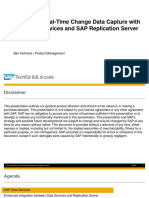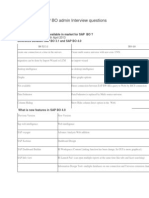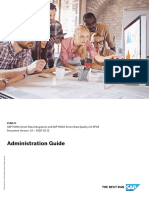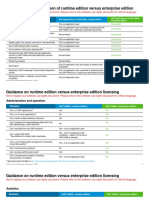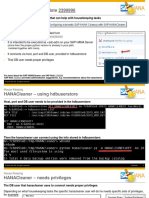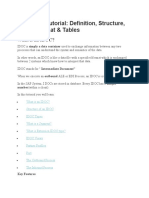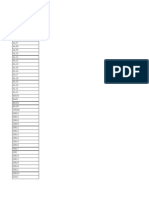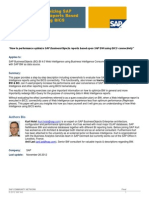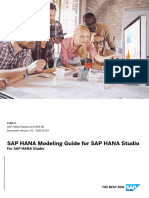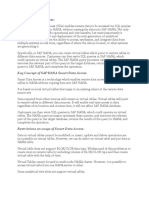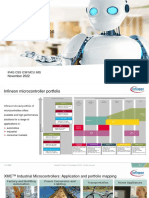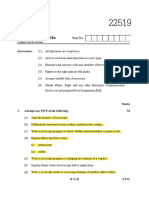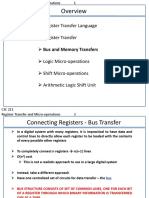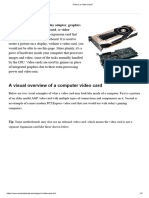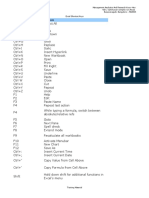100% found this document useful (1 vote)
190 views30 pages1.smart Data Access
Smart Data Access in SAP HANA allows remote data to be accessed virtually as local tables without copying the data. This provides real-time access to integrated data from multiple systems regardless of location, while controlling costs. Virtual tables map to remote data sources so queries can retrieve relevant parts of remote data. This enables analytical applications to leverage remote data without moving it to HANA.
Uploaded by
shreyessorte3984Copyright
© © All Rights Reserved
We take content rights seriously. If you suspect this is your content, claim it here.
Available Formats
Download as DOCX, PDF, TXT or read online on Scribd
100% found this document useful (1 vote)
190 views30 pages1.smart Data Access
Smart Data Access in SAP HANA allows remote data to be accessed virtually as local tables without copying the data. This provides real-time access to integrated data from multiple systems regardless of location, while controlling costs. Virtual tables map to remote data sources so queries can retrieve relevant parts of remote data. This enables analytical applications to leverage remote data without moving it to HANA.
Uploaded by
shreyessorte3984Copyright
© © All Rights Reserved
We take content rights seriously. If you suspect this is your content, claim it here.
Available Formats
Download as DOCX, PDF, TXT or read online on Scribd
/ 30










